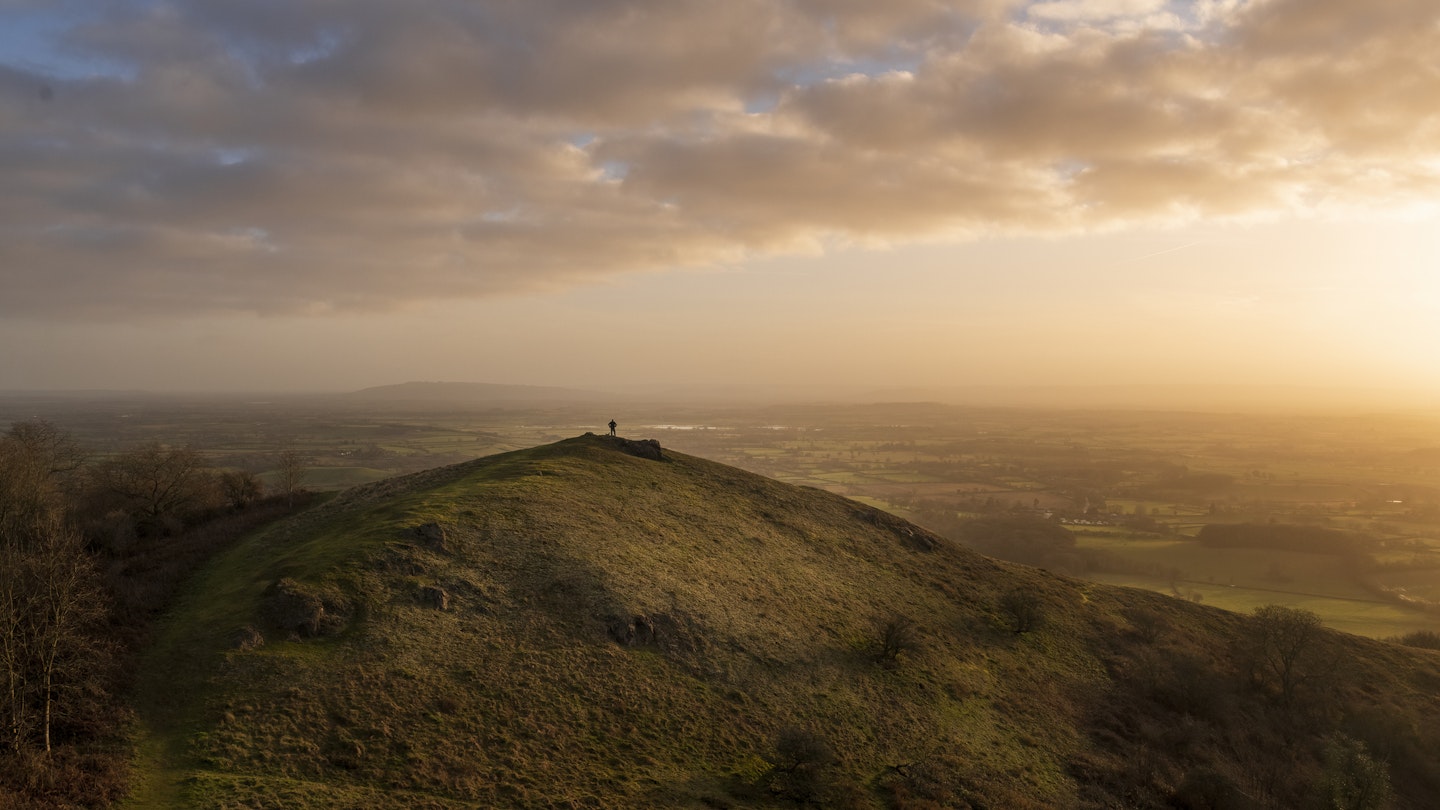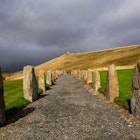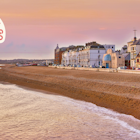Despite its famously sepia-toned skies, England remains a perennially popular destination.
From iconic sights like Big Ben and the London Eye to quaint chocolate box villages in the rolling hills of Yorkshire or the Cotswolds, this seductive country has a certain appeal across all generations.
But its allure also means some attractions and locations suffer from high concentrations of visitors, which can often affect the overall travel experience. However, there are plenty of less crowded options that may hold just as much delight, should you seek them out.
Here are a few ideas for quieter escapes in England.
1. Stroll through English countryside in Herefordshire instead of the Cotswolds
Characterized by caramel-colored stone cottages wrapped within a bucolic English countryside setting, the Cotswolds are an ever-evocative slice of old Albion that attract huge numbers to their quaint cobblestone streets.
Hugging the Welsh border a few miles to the west, Herefordshire is notable for its languid apple orchards, and its dreamy towns and villages are equally pretty, with far fewer visitors. The black-and-white timber townhouses of Ledbury, Leominster and Ross-on-Wye are wonderfully charming and there are some magnificent walks in the surrounding Wye Valley landscape (with plenty of rustic riverside pubs to unwind in afterward).
Planning tip: Autumn/fall is a great time to visit, as the harvest brings a gaggle of gregarious cider festivals

2. Witness Lincoln Cathedral’s colossal architecture in place of St Paul’s Cathedral
Completed in 1710, St Paul’s Cathedral is an enduring symbol of England and Christopher Wren’s masterpiece is still hugely popular. Unfortunately, its cavernous dome is somewhat overshadowed these days by the City of London’s ever-expanding collection of glassy skyscrapers nearby.
There’s no danger of that happening with Lincoln Cathedral, 130 miles north of London. The monstrous Gothic cathedral towers over Lincoln’s patchwork of redbrick houses and was the tallest building on Earth when completed in 1311, a title it held for 237 years until a storm blew its spire down in 1548. The walk up Steep Hill to the cathedral is pleasant too, with its cobblestoned streets flanked by traditional sweet shops and tea rooms.
3. Choose the sunny beaches of the Isles of Scilly over mainland Cornwall
With its coastal castle ruins, wind-whipped landscapes, cutesy fishing villages and golden beaches, Cornwall is an enchanting corner of England and it’s little surprise so many wealthy Londoners have second homes lining its bays.
Sitting just 28 miles from Cornwall’s mainland western tip, the Isles of Scilly are an Atlantic archipelago with pristine sands and almost no cars. They’re a window into a slower, easier way of life and the summer months are wonderful for shoreline strolls and lazy pub lunches of fresh seafood. And just to add to the islands’ unusual nature, you can travel here direct by helicopter in 15 minutes from Penzance Heliport.
4. Soak up capital views from the Monument rather than The Shard
At a dizzying 1016ft-high, London’s tallest building brings some pretty extraordinary views from its 72nd-floor observation deck. But The Shard can get crowded and comes with a minimum £28 entry fee.
Consider heading across the Thames to the Monument to the Great Fire of London, a remarkable stone column that’s served as a reminder of that famous event for almost 350 years. Completed in 1677, for years it was London’s highest viewpoint at 62m and still offers some fine vistas across the capital. And at only £6 to enter, it’s better value.
Planning tip: There’s only one way up and it’s via 311 spiralling stone steps. So decide if that’s something you’re able to tackle ahead of a visit.

5. Get spiritual at Castlerigg Stone Circle in place of Stonehenge
Despite their inconvenient location in rural Somerset, England’s most famous standing stones continue to attract huge numbers of tourists. But Stonehenge isn’t England’s only curious stone circle.
Neolithic Avebury henge and its stone circles in Wiltshire are impressive, but for a truly picturesque experience, head up to Castlerigg Stone Circle in the Lake District. Made up of 48 stones dating between 3000 and 4000 years old, the stones themselves aren’t particularly sizeable but when paired with the dramatic rising backdrop of Helvellyn and High Seat mountains, you’ll be reaching for your camera pretty swiftly.
6. Hike the spectacular Shropshire Hills rather than the Lake District
Visitors flock to the Lake District in their millions every year, looking for escapism in the form of walks, hikes, cycling and serenity. Summertime, however, sees swelling numbers and sky high accommodation prices.
With its yawning green valleys and heather-blanketed hills, the Shropshire Hills were once described by the Victorians as “Little Switzerland”. Despite this lofty nickname the region never became a big tourism draw, which might be considered a good thing. And with excellent train links to historic Shrewsbury and foodie haven Ludlow, the cinematic hikes and serpentine cycling trails here are just the start of an adventure in England’s most underrated county.
7. Lose yourself in the British Library’s Treasures Gallery rather than the British Museum
With over 4 million visitors in 2022, the British Museum ranks behind only London’s Natural History Museum in terms of UK museum visitor numbers. And while it does contain some prominent (and controversial) displays such as the Rosetta Stone, the British Library’s fabulous Treasures Gallery contains items arguably just as celebrated but with far less fanfare.
Less than 20 minutes' walk from the British Museum, the Treasures Gallery is like a greatest hits of the written word, with displays including original copies of Chaucer’s Canterbury Tales, Shakespeare’s First Folio and Magna Carta. More modern collections include handwritten Lennon and McCartney lyrics of Beatles classics like "In my Life" and "Yesterday".

8. See visceral maritime power at Portsmouth Historic Dockyard over Greenwich Royal Museums
England’s maritime strength partially explains why the British Empire was able to become such a global superpower, and London’s Royal Museums Greenwich attract over 1.5 million visitors every year.
But while the Cutty Sark and the National Maritime Museum are interesting, they can’t compare to the scale of the enormous warships moored at Portsmouth Historic Dockyard. Launched in 1765, Lord Nelson’s majestic flagship HMS Victory is the glorious highlight, while HMS Warrior, dating from 1860, was the world's first iron-hulled warship. And don’t miss the delicate timber remains of Henry VIII’s legendary sunken warship the Mary Rose.
Planning tip: When exploring Victory, make sure to listen to the gripping audio guide, especially when it recounts Nelson’s last moments before he was fatally wounded at the Battle of Trafalgar.
9. Explore 1000 years of history at Warwick Castle rather than Windsor Castle
For many reasons, the British Royal Family remain box office hits and it’s perhaps no shock that over a million people visit Windsor Castle every year. While Windsor is a beautiful place in gorgeous grounds (especially the view from the summit of the Long Walk), there’s a captivating alternative fortress less than 100 miles north.
Warwick Castle is a proper, bona fide castle, the sort you see in swashbuckling movies or read about in adventure books as a child. With foundations dating back over 1000 years, its rising turrets, narrow arrowslits and formidable stone walls are visible from miles around and its purpose-built jousting arena brings a visceral live element to the experience.
Planning tip: Warwick Castle’s idyllic grounds also host food festivals and music gigs throughout the summer, so plan ahead and pair up a daytime visit with an evening event.











